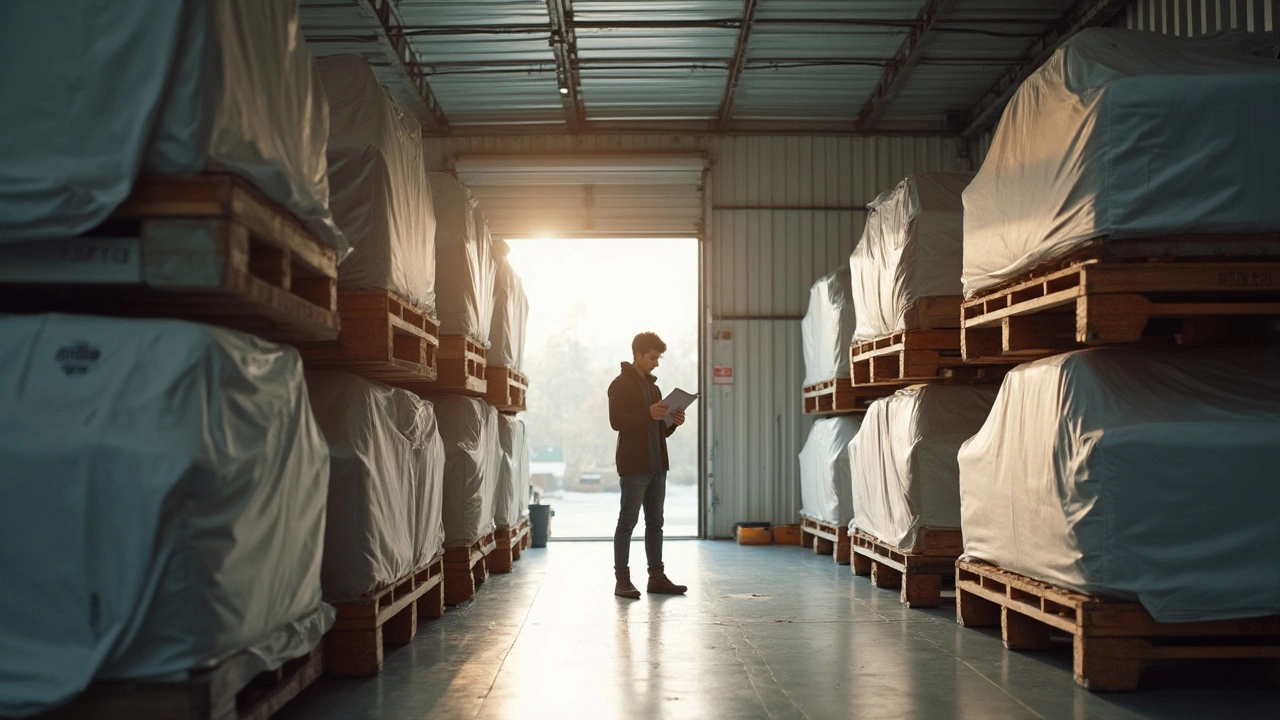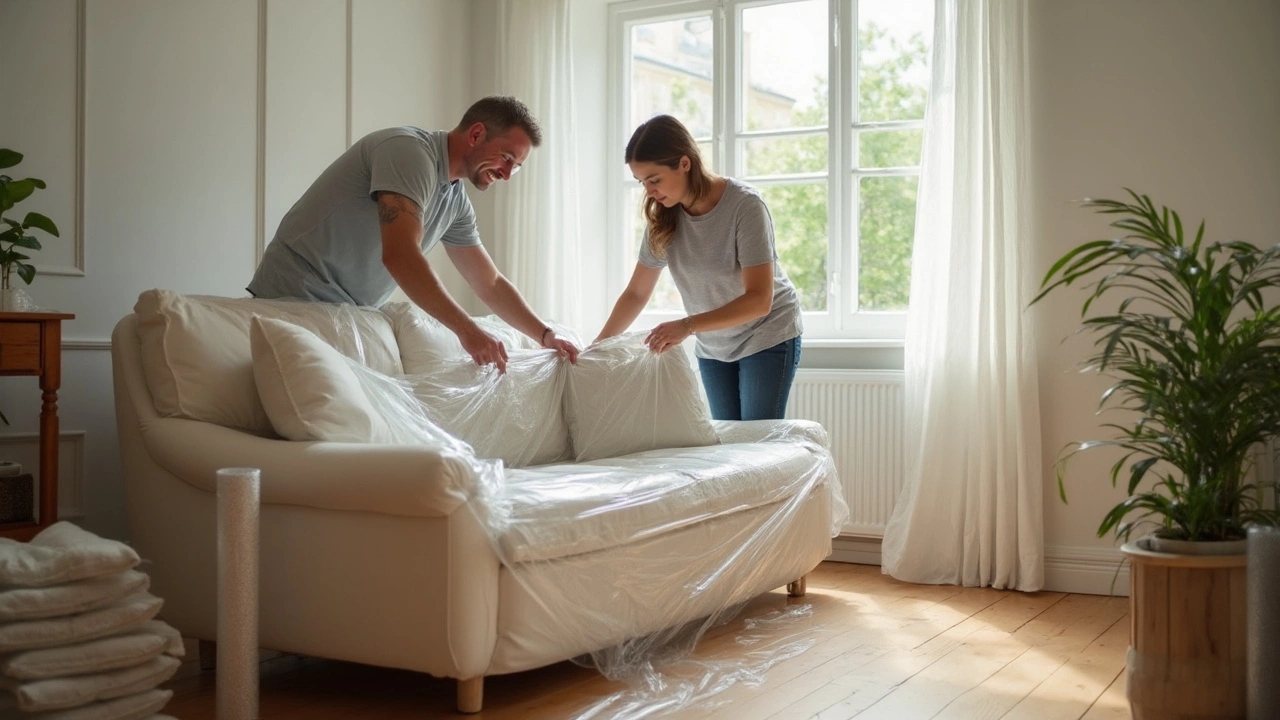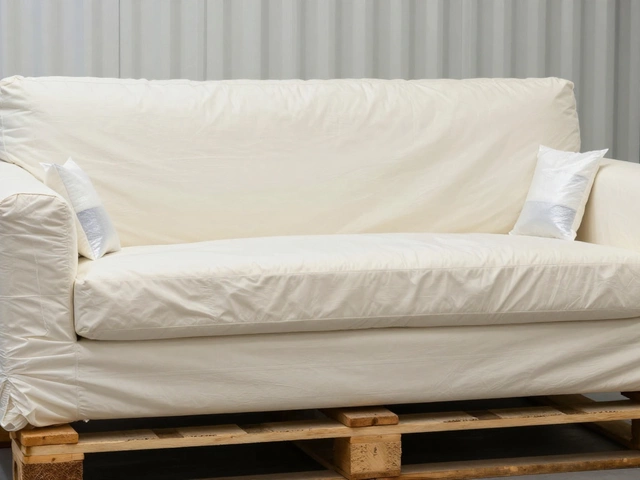If you’ve ever put a sofa in storage and come back to find it smelling weird or covered in dust, you know how frustrating it can be. Sofas aren’t cheap, so a little prep goes a long way in keeping them in shape. The trick is to block out moisture, dirt, bugs, and smells right from the start.
First off, cleaning is non-negotiable. Any crumbs, spills, or pet fur left behind can attract pests or lead to funky odors over time. Give the cushions and cracks a good vacuum, wipe down the legs and frame, and don’t miss hidden spots underneath. Any lingering stains can set in while the sofa sits in storage, so it’s worth scrubbing them out now instead of waiting months to deal with stains that won’t budge.
Once your sofa is spotless and dry, you’re ready for the next step—protecting it the right way. The goal is to wrap your sofa like a big burrito, but not so tight it can’t breathe. Get this part right and you’ll skip headaches, repairs, and replacements later down the road.
- Getting Your Sofa Ready
- Choosing the Right Protection Materials
- Storing Your Sofa Safely
- Common Mistakes to Dodge
Getting Your Sofa Ready
Getting your sofa ready for storage is more about prep work than heavy lifting. It pays off, though—if you skip steps here, you’ll pay for it later in stains, smells, and maybe even bugs. Nobody wants that on their nice couch.
Here’s the checklist you don’t want to ignore before putting your sofa storage plan into action:
- Deep Clean from Top to Bottom: Start with a vacuum and get into every crease, gap, and under the cushions. Most upholstery holds onto dust and dirt. For leather, grab a slightly damp cloth—don’t soak it. For fabric, use a recommended upholstery cleaner for tough spots.
- Wait Until It’s Completely Dry: Even a little moisture can turn into mildew during storage. Crack a window or use a fan to speed up the drying process if you washed any spots.
- Remove Anything Loose: Take off pillows, throw blankets, and removable cushions if possible. Store them separately or wrap them for extra protection. Loose items can trap moisture and turn musty fast.
- Disassemble If You Can: Some sofas come apart at the legs or arms. Taking them off makes it less likely they’ll snap or warp in storage, plus the whole thing becomes easier to move and wrap.
- Bag Small Parts: If you unscrew legs or arms, pop the screws and small stuff in a zip bag. Tape the bag to the sofa or keep it with your moving supplies so you’re not scrambling later.
If you’re curious how often people forget to clean thoroughly, a December 2023 survey from a national storage provider found that 42% of renters skipped vacuuming their couch before storage—and nearly all of them reported musty smells or stains when they unpacked. Don’t be part of that statistic.
| Step | Why It Matters |
|---|---|
| Vacuum and clean thoroughly | Keeps bugs and mold at bay; cuts down on odors |
| Dry every surface | Prevents mold and mildew growth |
| Disassemble parts | Reduces risk of damage during moving/storage |
| Separate cushions and covers | Avoids squishing and trapped moisture |
Spend an hour getting this right, and you’ll save yourself days of cleaning and repairs when it’s time to bring your sofa back out. Don’t rush this part.
Choosing the Right Protection Materials
If you want your sofa storage experience to end well, you can’t just toss an old sheet over your couch and hope for the best. Certain materials work better than others to block out moisture, dust, and sneaky bugs.
First, use a layer of moving blankets or thick quilts directly against the sofa. This stops scratches and protects the upholstery from rubbing and dents. You can rent moving blankets from any storage facility or grab them from a home improvement store. Avoid anything plastic right up against fabric—plastic can trap moisture inside, which means mold and mildew will move in, especially if your sofa sits for months.
For the outer layer, use furniture covers designed for storage, or even large cotton sheets. These keep your sofa dust-free and give it a bit of breathing space. Plastic sofa covers can work as long as they’re left slightly open at the bottom for airflow. If your storage space is damp or prone to temperature swings, stick to breathable options to avoid condensation.
- Wrap wooden legs and arms in bubble wrap or soft padding to stop nicks and chips.
- Remove sofa legs if possible, wrap them up, and store them in a sealed bag taped to the sofa frame.
- If you use tape to keep blankets or covers in place, only stick the tape to itself, not directly to the upholstery—you don’t want residue or ripped fabric when you finally unwrap everything.
If mice and bugs are a worry, slide dryer sheets or cedar blocks under and around the sofa. These actually work to keep pests away and don’t use heavy chemicals.

Storing Your Sofa Safely
Picking the right spot to stash your sofa is just as important as how you prep and wrap it. Not all storage units are the same. If you can, spring for a climate-controlled space. Extreme heat, cold, or humidity mess with fabric and wood fast—humidity alone can cause mold, and freezing temps can crack leathery parts. A climate-controlled unit keeps temps steady and moisture low, so you dodge a lot of trouble.
Next, never put your sofa straight on the concrete floor. Concrete pulls moisture from the air and transfers it into anything sitting right on top. Place your sofa on wooden pallets or a thick plastic sheet. This leaves air under the sofa and stops water from creeping up from below.
Stacking stuff on top of your sofa is always a bad idea. Even light boxes or bags can squish the cushions out of shape after a few months. Keep your sofa upright in its natural sitting position. If your storage area is tight, store the cushions separately, then line them up next to the main frame so everything stays the same shape as when you left it.
Here are a few quick don’ts that people still get wrong, even with all the info out there:
- Don’t wrap your sofa in plastic wrap that’s 100% airtight. This traps moisture and invites mildew or mold.
- Don’t use cheap tarps or thin sheets—they tear and let dust in. Go for thick moving blankets, drop cloths, or special furniture covers made for storage.
- Don’t wedge your sofa storage against the walls of your unit. Leave a small gap for air to move around it and to keep it from picking up any dampness from the outside wall.
Lastly, if you plan to store for more than a couple of months, drop in a moisture absorber like silica gel packs or a box of baking soda inside the cover. This tackles any rogue humidity and keeps things smelling fresh.
Common Mistakes to Dodge
People mess up with sofa storage way more often than you’d think. Usually, it comes down to skipping simple steps or using the wrong materials. If you avoid these slip-ups, you’ll keep your sofa looking and smelling fresh, without spending lots of cash on fixes later.
- Storing a damp sofa: Even a little bit of leftover moisture is trouble. Mold and mildew thrive in damp, dark storage spaces. One study found that mold can start growing on upholstery in less than 48 hours if conditions are right.
- Wrapping too tight or with plastic only: Airtight plastic traps humidity. This means you’re basically rolling out the welcome mat for mold and a musty smell. "Furniture should be covered with breathable materials to prevent condensation and allow air flow," says a handy tip from the National Furniture Storage Association.
- Directly placing your sofa on the ground: Cold, damp floors send moisture into furniture. Tossing your couch right onto concrete is a recipe for warping or even pest infestations. Always lift it up on pallets or planks.
- Using harsh cleaning sprays: Some cleaners leave sticky residues or even damage certain fabrics over time. Always check what’s safe for your material, and skip anything too strong.
- Not prepping cushions separately: Storing all the cushions in one big heap can squish the foam and mess up their shape for good. Keep them apart or, if possible, store them standing on their sides.
- Ignoring storage facility climate: Places without climate control see wild temperature swings. Heat, cold, and high humidity can all wreck fabrics and frames. According to a survey by SafeStore UK, over 60% of furniture damage in storage comes from poor facility conditions.
Here’s a look at the real-world impact from common mistakes and how they affect your sofa storage results:
| Mistake | Consequence | Prevention |
|---|---|---|
| Storing damp | Mold, odors | Let sofa dry fully before wrapping |
| Plastic wrap only | Condensation, mildew | Use moving blankets or fabrics that breathe |
| Sitting on ground | Moisture damage, pests | Elevate with pallets or planks |
| Cushions in pile | Misshaping | Store separately, standing |
| No climate control | Warped or faded fabric | Pick a climate-controlled unit |
These mistakes are surprisingly common, but pretty easy to avoid with a bit of planning. Treat your sofa right from the start, and you won’t have any nasty surprises waiting when you bring it back home.







